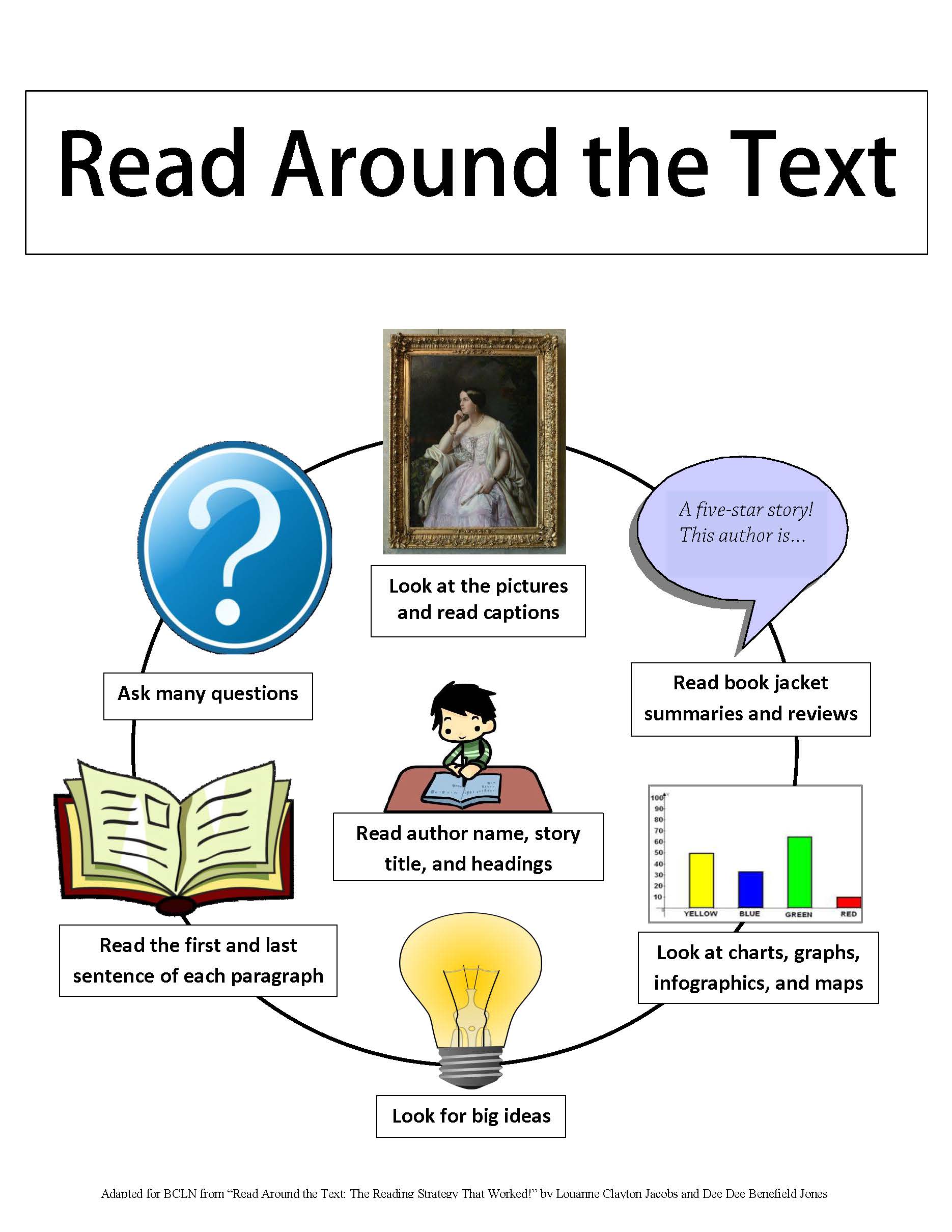6.1 Before You Read
| Site: | Cowichan Valley School District - Moodle |
| Course: | ELA5, CSS, Sferrazza |
| Book: | 6.1 Before You Read |
| Printed by: | Guest user |
| Date: | Saturday, 20 December 2025, 4:51 PM |
Learning Targets
By the end of this lesson, you should be able to say YES to the following questions.
- Can I construct meaningful personal connections to what I am reading?
- Can I use a variety of comprehension strategies and thinking skills before reading, listening, or viewing to construct meaning from my novel?

All About Setting
One of the most important parts of any story is the setting. The setting describes:
1. The location of the story - The author usually describes the setting(s) in a story with lots of detail. This helps the reader really picture the scene.
- In a small town in northern British Columbia, in the woods, on a distant planet, etc.
2. The time of the story - The time when a story takes place affects many things. If the story were to take place in the early 1800s, for instance, then everything the characters do, wear, say, and how they live must match the time period.
- A long time ago, today, 2050, during a war, in the future...
3. The mood or feeling of the story - Is it a happy place? A sad place? A scary place? Authors carefully choose their settings in order to create a certain mood.
- Frightening: a story set in a haunted house on a dark, stormy night.
- Peaceful and relaxing: a tropical island with a gentle breeze and waves lapping against the shore.
Skillful writers often take you through many different moods as they tell their story.
Examples of Setting
Here is a passage from a sample short story. Can you read how the location, time, and mood are developed in this passage?
Example:
The old barn is cool and cavernous. Its walls offer shelter to many creatures. Particles of straw and dust dance in the shafts of light that pierce the gentle gloom. Earthy smells drift by. In the distance a dusty road winds uphill through a tunnel of maple trees. The scent of lavender perfumes the air, and the early afternoon sun glitters on the wings of bees.
Can you identify the location, time, and mood? Here are some ideas:
Location
-
An old barn, probably out in the country somewhere. In the distance is a dusty road that winds through a tunnel of maple trees.
Time
-
Early afternoon. It probably takes place in the summer (the scent of lavender and presence of bees hints at this).
Mood
-
Very peaceful and quiet.
Accents, Dialects, and Setting
Have you ever listened to people that use accents and words that are different from your own? Sometimes, you can tell what part of Canada someone is from by his or her accent.
A regional dialect is a variety of language spoken in a particular region. It may have unique vocabulary, grammar, and pronunciation from other regional varieties of the language - a bit more than just a different accent. This happens in Canada, where words are pronounced differently depending on where you live. Examples include tomato, about, caramel, route, aunt, iron, pecan, and more. Sometimes, a story or novel will have characters with accents or dialects.
What is the author’s purpose when using dialect?
- To make characters seem more real.
- To make the speaking fit the setting.
Fun With the Appalachian Dialect
Some characters in Bridge to Terabithia, one of your novel study choices, speak an Appalachian dialect from an area in the United States that is south of Ontario.
For example, the characters may:
- leave out the subjects or verbs in sentences
- use incorrect grammar (like “Don’t pay me no mind.” Instead of “Don’t pay attention to me.”)
- use words in different and colourful ways
As you watch the video, pause and try out the accent for fun:
Plot Diagrams
Do you remember the story element of plot? After you've read your novel, you will create a plot diagram showing how the story develops. It is important to be able to summarize main events. This means a brief retelling of the most important parts of the story.
You will keep track of the main events as you read the story. Here are the elements of plot you will include on your plot diagram.
How To Complete This Novel Study
Before you read your novel, you will complete a Reading Scavenger Hunt. Then, for each section of the novel, you will complete activities and responses AS you read the section, AFTER you read the section, and BEFORE you read the following section.
Do NOT read ahead; complete the activities as outlined in each section of work.
Tracking the Plot
After you read the novel, you will create a plot diagram. To prepare for this, you will summarize main events as you read through the novel. A summary is a concise retelling of the most important event or events.
Summary: brief retelling or restating
Concise: giving a lot of information clearly and in a few words; brief but comprehensive.
Templates for tracking the plot of your novel are available here. Choose a pdf to print and write on by hand or a document to record your summaries on your computer. Be sure to save your document regularly if working on the computer.
| Novel | DOCUMENT | |
| Bridge to Terabithia |  |
 |
| Rats of NIMH |  |
 |
| Novel of Choice |  |
 |
Reading Scavenger Hunt
|
To help you prepare to read something for the first time, you can "Read Around The Text". You will complete a Reading Scavenger Hunt before you read your novel. You will:
|
What can you find out before you read?

Reading Scavenger Hunt Download
Download your Reading Scavenger Hunt here:
PDF:  DOCUMENT:
DOCUMENT: 
Choose pdf to print and complete by hand. Choose the document to fill in on your computer.